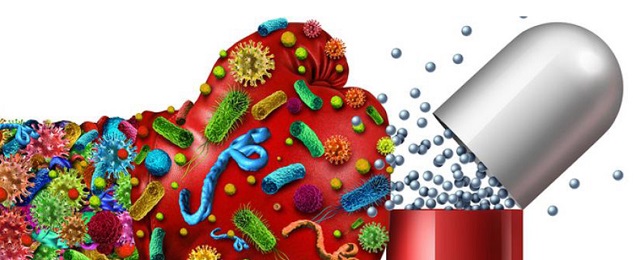
Scientists around the world are already battling superbugs worse that COVID-19
| PROF. DAVID W GRAHAM AND PROF. PETER COLLIGNON | For many years, people believed antibiotic resistance in bacteria was primarily driven by imprudent use of antibiotics in clinical and veterinary settings. But growing evidence suggests that environmental factors may be of equal or greater importance to the spread of antibiotic resistance, especially in the developing world.
Here we focus on antibiotic resistant bacteria, but drug resistance also occurs in types of other microorganisms. This means that our ability to treat all sorts of infectious disease is increasingly hampered by resistance, potentially including coronaviruses like SARS-CoV-2, which causes COVID-19.
Overall, use of antibiotics, antivirals, and antifungals clearly must be reduced, but in most of the world, improving water, sanitation, and hygiene practice – a practice known as WASH – is also critically important. If we can ensure cleaner water and safer food everywhere, the spread of antibiotic resistant bacteria will be reduced across the environment, including within and between people and animals.
As recent recommendations on antimicrobial resistance (AMR) from the Food and Agriculture Organisation of the United Nations (FAO), the World Organisation for Animal Health (OIE) and World Health Organization (WHO) suggest, the “superbug problem” will not be solved by more prudent antibiotic use alone. It also requires global improvements in water quality, sanitation, and hygiene. Otherwise, the next pandemic might be worse than COVID-19.
Bacteria under stress
To understand the problem of resistance, we must go back to basics. What is antibiotic resistance, and why does it develop?
Exposure to antibiotics puts stress on bacteria and, like other living organisms, they defend themselves. Bacteria do this by sharing and acquiring defence genes, often from other bacteria in their environment. This allows them to change quickly, readily obtaining the ability to make proteins and other molecules that block the antibiotic’s effect.
This gene sharing process is natural and is a large part of what drives evolution. However, as we use ever stronger and more diverse antibiotics, new and more powerful bacterial defence options have evolved, rendering some bacteria resistant to almost everything – the ultimate outcome being untreatable superbugs.
Antibiotic resistance has existed since life began, but has recently accelerated due to human use. Some bacteria are naturally resistant; others acquire resistance genes from their microbial neighbours, especially in our digestive systems, throat, and on our skin.
The pharmaceutical industry initially responded to increasing resistance by developing new and stronger antibiotics, but bacteria evolve rapidly, making even new antibiotics lose their effectiveness quickly. As a result, new antibiotic development has almost stopped because it garners limited profit. Meanwhile, resistance to existing antibiotics continues to increase, which especially impacts places with poor water quality and sanitation.
This is because in the developed world you defecate and your poo goes down the toilet, eventually flowing down a sewer to a community wastewater treatment plant. Although treatment plants are not perfect, they typically reduce resistance levels by well over 99%, substantially reducing resistance released to the environment.
In contrast, over 70% of the world has no community wastewater treatment or even sewers; and most faecal matter, containing resistant genes and bacteria, goes directly into surface and groundwater, often via open drains.
This means that people who live in places without faecal waste management are regularly exposed to antibiotic resistance in many ways. Exposure is even possible of people who may not have taken antibiotics.
Spreading through faeces
Antibiotic resistance is everywhere, but it is not surprising that resistance is greatest in places with poor sanitation because factors other than use are important. For example, a fragmented civil infrastructure, political corruption, and a lack of centralised healthcare also play key roles.
One might cynically argue that “foreign” resistance is a local issue, but antibiotic resistance spread knows no boundaries – superbugs might develop in one place due to pollution, but then become global due to international travel.
The world’s current experience with the spread of SARS-CoV-2 shows just how fast infectious agents can move with human travel. The impact of increasing antibiotic resistance is no different.
As an example of antibiotic resistance, the “superbug” gene, blaNDM-1, was first detected in India in 2007 (although it was probably present in other regional countries). But soon thereafter, it was found in a hospital patient in Sweden and then in Germany. It was ultimately detected in 2013 in Svalbard in the High Arctic. In parallel, variants of this gene appeared locally, but have evolved as they move. Similar evolution has occurred as the COVID-19 virus has spread.
Relative to antibiotic resistance, humans are not the only “travellers” that can carry resistance. Wildlife, such as migratory birds, can also acquire resistant bacteria and genes from contaminated water or soils and then fly great distances carrying resistance in their gut from places with poor water quality to places with good water quality. During travel, they defecate along their path, potentially planting resistance almost anywhere. The global trade of foods also facilitates spread of resistance from country to country and across the globe.
But there are common roots to disease spread – pollution, poor water quality, and inadequate hygiene. Using fewer antibiotics is critical to reducing resistance. However, without also providing safer sanitation and improved water quality at global scales, resistance will continue to increase, potentially creating the next pandemic. Such a combined approach is central to the new WHO/FAO/OIE recommendations on AMR.
 The Independent Uganda: You get the Truth we Pay the Price
The Independent Uganda: You get the Truth we Pay the Price



